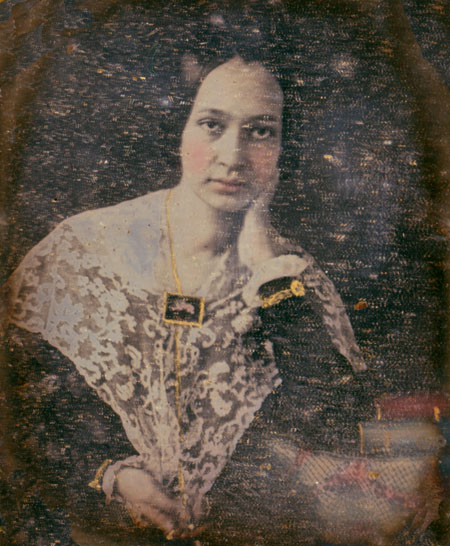The Dear Ones at Home
 LSU Libraries Special Collections presents the exhibition “The Dear Ones at Home: Women’s Letters and Diaries of the Civil War Era,” December 6, 2010 – April 30, 2011 at Hill Memorial Library. Marking the sesquicentennial of the Civil War, which started April 12, 1861, the exhibition explores the variety of women’s experiences during the war and its impact on their worlds.
LSU Libraries Special Collections presents the exhibition “The Dear Ones at Home: Women’s Letters and Diaries of the Civil War Era,” December 6, 2010 – April 30, 2011 at Hill Memorial Library. Marking the sesquicentennial of the Civil War, which started April 12, 1861, the exhibition explores the variety of women’s experiences during the war and its impact on their worlds.
Drawing on the rich manuscript holdings of the Louisiana and Lower Mississippi Valley Collections, “The Dear Ones at Home” reveals what life was like on the home front, as women as well as men mobilized for the war. The exhibition displays photographs from the collections, including a daguerreotype of Varina Howell Davis, as well as illustrations from Harper’s Weekly.
Letters and diaries written by women at the time show how, as nurses, and home front organizers, they supported or hindered the Confederate effort. As sweethearts and wives, they used their powers of affection to compel or dissuade men to serve. On April 14, 1862, Amelia Faulkner of Faulkland Plantation in Louisiana wrote to her friend Henrietta Lauzin of Baton Rouge that “girls ought to have nothing but soldiers for their beaux and if all girls thought as we do, there would be more companies leave this state.” But that same year, Mary Pugh, of Lafourche Parish wrote to her husband Richard “you have done enough now to satisfy yourself and everyone else so come now if only for the sake of your little wife.”
Documents show how women faced the perils of battle and occupation. In a letter to a female friend, J. Young Sanders Jr, wrote. “My gentle friend, never come in contact with the enemy’s brutal soldiering, if it is avoidable. ..but flee them as you would a hideous pestilence. They wage war upon women and feeble old men.” Ann Wilkinson Penrose’s diary records her fury when the Federals came to arrest her father in New Orleans: “My blood boiled, I felt possessed with fury, … I made my way down as fast as I could with my crutches … I felt as if I could strike them to the ground.”
Additional items reflect women’s political attitudes and their reactions to the end of war and slavery.
Prepared by LSU Curator of Manuscripts Tara Laver and Exhibitions Coordinator Leah Jewett, the exhibition explores how women responded and adjusted, or not, to wartime changes in the customs of courtship and marriage, death and mourning, women’s work and gender roles, and religious observance and faith, as well as race relations. Manuscript reminiscences of the war years and contemporary and modern published works of fiction and non-fiction are featured, including several antebellum pieces by African American women writers.
Also on display is a complete set of prints from artist Edwin Forbes’s Life Studies of the Great Army (1890). Forbes travelled with the Union army, sketching images of camp life as a special correspondent for the contemporary publication Frank Leslie’s Illustrated News. After the war he completed etchings based on his war-time sketches, compiling them for his work Life Studies.
In association with the exhibition, as part of Women’s History Month, Alecia P. Long, LSU Assistant Professor of History, will give a talk titled “(Mis)Remembering General Order No. 28: Benjamin Butler, the Woman Order, and Historical Memory” at noon on March 2, 2011 in the Hill Memorial Library lecture hall.
The exhibition and lecture are free and open to the public.
